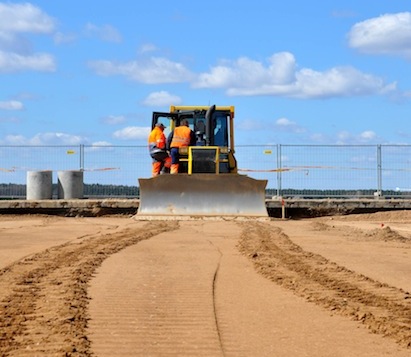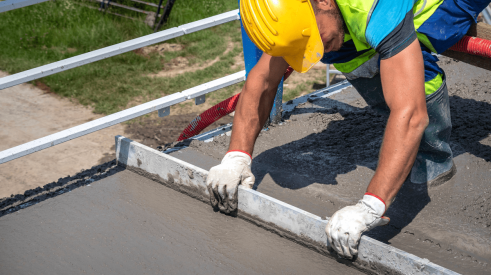Last month, I revealed the proverbial “elephant in the room” for both this year’s elections and the home-building recovery — a growing labor shortage that is spreading to more markets each month (see “Managing the Coming Labor Shortage”).
The election is over now and no matter who won, despite prognostications both left and right, the republic will survive. I predicted that neither Obama nor Romney would raise the issue because it is a notorious “third rail,” and now you know if I was correct. Besides, most of the public and the media are fixated on the 7.8 percent unemployment rate. How can there be a labor shortage with so many out of work? The notion of a labor crisis with serious consequences for home building (along with hospitality, healthcare, agriculture, and food service) does not yet register.
The only real solution to the problem, as discussed last month, is a guest-worker system, but the odds of seeing that soon enough to help are slim to none. Yet there are very specific, tactical moves available to insulate your company from most of the labor shortage. The goal is build resistance to the threat in three ways:
A. Become as efficient as possible in field construction. Reduce the amount of labor needed to build the house, including in-process rework and warranty.
B. Become as effective as possible in operations. This includes eliminating errors, omissions, glitches, and headaches — all the things that cost your suppliers and trades hidden time in bidding, options, selections, contracts, scopes, POs, VPOs, scheduling, etc.
C. Become the “builder of choice.” You want to be the one that trades would rather work with than anyone else because you do everything in A and B so well. Plus, you always treat suppliers and trades with dignity and respect, and you pay consistently, fairly, and on time.
If you achieve these three goals, no matter how great the shortage, you’ll be immune. Suppliers and trades will take care of you first because it’s in their own best interest. Reaching these goals, however, will not come through proclamations, memos, or exhorting the troops. Einstein said it best: The definition of insanity is doing things the way you have always done them and expecting different results.
“Are immunizations painful? Do flu shots hurt? Sure, but if you are smart, you are willing to endure some up-front pain to prevent debilitating sickness down the road. This is your opportunity to turn the labor shortage into just one more competitive advantage.”
So make your choice. Sit around and hope for some government action, keep doing what you have always done and join the bidding war, or take some positive action to head this off. If you resolve to take action and do things differently, here’s a 10-step labor self-immunization plan:
1. Lean the plans
My colleagues and I at TrueNorth have completed more than 100 Lean process implementations in 30 states, four countries, and two continents, and have learned some important realities. First, the great majority of architects have little or no knowledge of cost and cycle time. Second, engineers may have the knowledge, but they rarely show concern for cost and time. Third, the vast majority of builders do not understand the cost and time implications of inadequate plans and thus will not pay for fully analyzed, fully detailed plans with working drawings. That’s called a perfect storm for waste. The result is that homes take far longer to build than necessary — too much for initial construction, too much for in-process rework, too much for return trips, and too much for warranty. They all contribute to the labor shortage.
2. Lean the product
Each house we have studied in our 100 implementations, no matter the price point or amenity level, can be simplified without negative impact on design, quality, or salability. The choices builders make for components have tremendous implications on both labor and schedule. The plan can be technically right, but the design choices or materials in many cases may be wrong, or just too pricey or too many. Antoine St. Exupery said it best: “Perfection is achieved not when there is nothing more to add, but when there is nothing more to take away.”
Get rid of the extra kings, jacks, cripples, oversized headers and beams, excess can lights, over-extended ducts, unneeded outlets, unused chases, etc. Build that stairway more intelligently and save $500. Get rid of anything the customer will not pay for or does not value. Make the house easier and quicker to build for the trades, and the labor burden goes down.
3. Lean the process
Form a few small groups of your trades and your staff and ask for no-tears answers to this question: How can our company be easier to do business with? Then do it. Really, it is that simple if you provide a safe environment, you are willing to listen, and you respond to their input. As soon as you start throwing “yes, but” or “tried that, didn’t work” at them, the communication stops cold. Even with the best builders, we find significant process issues in the way bidding is done, contracts are specified, options and selections are processed, POs are issued, VPOs are processed, warranty service is assigned, etc. All of these take excess time for the suppliers and trades. Resolve these and they’ll have time to do more important things, like build your houses.
4. Learn to schedule
In a perfect world, we’d go straight to step five, but all six of TrueNorth’s consultants spend the majority of their time with builders, suppliers, and trade contractors in the field. Each reports the art and science of scheduling, with a few notable exceptions, has deteriorated significantly during the housing recession, and the negative impact on the trades is huge. Before you run off and start fixing it (see step six), it is essential to stop here and pay homage to one of the greatest lessons of the late quality guru Dr. Deming: You must stabilize a system before you improve it.
Literally hundreds of millions of dollars have been wasted on software automating bad systems in home building due to violation of this simple truth. There is no more powerful moneymaking concept in home building than “even flow” production — if you understand total cost as opposed to mere bid price. So teach your people how to schedule first — on paper — then buy that great new program and make it really cook. The money saved in labor — both your own and your suppliers and trades — will pay for the software 100 times over.
5. Lean the schedule
Presuming you have developed basic scheduling competence, now attack the wasted time and effort. Start with the elimination of wasted or otherwise unnecessary trips to the jobsite, something the builder predominately controls. This multi-billion dollar industry problem is 98 percent buried and rarely appears on any line item, yet the average builder incurs more than 50 unnecessary trips at an average cost of $200 per trip. That’s $10,000 per unit!
If you say they are not charging you for those trips, go back to “Go” and do not collect $200, because you need a remedial lesson in Lean operations. All dollars count and these costs are in their overhead, so one way or another, you pay. If that number still does not sound right, it is most likely low, and we have the data to prove it. After running more than 2,000 suppliers and trades through our Lean process implementations and having them work through our trip cost calculator, the evidence is inarguable. Imagine if you could capture half of that time and money and let your trades keep half — everything gets better, including the house. To continue to look the other way on this issue is wanton disregard of perhaps the biggest single controllable cost factor in home building, which, when controlled, will produce tremendous reduction in labor requirements.
6. Lean the suppliers and trades
The right number of suppliers and trades is almost always less than you have, and when facing labor shortages, the best strategy is to sole-source trades that will treat you as their number-one builder. This works if and only if you find the right trades with established financial strength, high transparency, and all the other factors of maintaining quality, delivery, schedule, and service.
Recently, we worked with a 100- unit-per-year builder whose previous purchasing manager was in the habit of spreading the business around to five or more framers, mechanicals, finish-trades, lumber companies, etc. The new manager came in from outside the industry, chose the best suppliers and trades, and established sole-source relationships with the great majority. Now he gets much better attention, response time, and cost control. Scheduling is greatly improved. He is a major part of their business, not someone they can push off if they are in a jam.
For the builder, everything is easier to manage with far fewer companies and invoices in their system. With the extra time they save there, they can spend it on any pricing and product issues. But here’s a caution: There are no shortcuts allowed. Start sole-sourcing without due diligence and you are asking for trouble.
7. Develop the supplier and trade relationships
A bright, 30-something builder recently said to me with a shrug of his shoulders, “We don’t really treat our trades all that well,” as if it did not matter much. With the looming labor shortage, that’s a prescription for disaster. I have heard from innumerable suppliers and trades during the past five years that when business picks up, they will not forget who treated them fairly and who did not. For many builders, the reckoning will be painful. Now is the time to develop and deepen supplier and trade relationships to the degree that you are without question the builder of choice. All of them have to decide every Monday morning: Where do we send our guys? Who gets first delivery? Whose customers are first in line for warranty service? Ask yourself the tough question: Will it be you? Unless you are 100 percent positive, you have work to do.
8. Componentize wherever possible
In 1989, I attended a two-day workshop by Bill Pulte where he stated with no small sense of irony, “Manufacturing techniques applied to housing are a revolution just on the verge of happening for more than 40 years.” Here we are, almost 24 years later, and there have been more starts and stops with millions spent on “almost getting there” than any of us can count. But if you were not sure that trusses and panels made sense in the past, that formula will change as labor becomes scarcer. You will find the same for other components that have, at some time in the past, been wholly or partially assembled offsite, including stairs, door assemblies, SIPs, plumbing trees, pre-cut and coded wiring bundles, and modularized foundations, among others. Anything that can be done offsite, consider it and make sure you are looking at total cost.
9. Develop the trades
This applies on two levels. First, for the existing trades, if you do not teach them Lean methods, who will? A look at the astounding progress automakers have made during the past 30 years shows they had the factories pretty well dialed-in 10 years ago. The past 10 years have been spent helping their suppliers get Lean. The more the automakers help the suppliers, the more it helps the automakers and, in turn, the consumers. When was the last time you participated in any event at a local vocational technical school? When was the last time your local HBA/BIA got involved in a plan for trade development? What are you doing to help develop your most important resource? If Ford saw its workforce frittering away and more barriers being raised to finding more workers, what would it do? Go out and make plastic bracelets for your next HBA meeting that say “WWFD” (What Would Ford Do?). Give them something to talk about. Maybe it will be the start of something big.
1O. Get politically involved to legitimize the workforce
That is probably as hard for you to read as it was for me to write. Spending time with government officials is way down on my list of things I’d like to do. Yet if builders and the National Association of Home Builders don’t start getting loud and obnoxious about labor shortages and campaigning for a legitimate, controlled, well-managed guest-worker program, who will? Of all the industries affected, we may have the most to lose and we simply cannot afford to do nothing. (If you have seen anything positive on this issue or have good ideas on how to solve it, please write me at scott@truen.com.)
Let’s say you are highly successful in four or five of these and make some progress in three or four more, what will have happened? First, you will have significantly reduced the need for labor in your product. Remember that even more than the actual labor to build, you are saving the labor and time involved in rework, extra trips, warranty, supervision, inspection, and process failure. All of this combines to increase margins, which leads us to an idea antithetical to most builders: You could pay more for labor in order to make more money.
Would I ever suggest you pay more for labor and receive nothing in return? Of course not. Once again, we are talking about total cost, not bid price, and those are never the same. Would you pay a bit more to be first in line to get more reliable trades, even during a labor shortage? That translates to better homes, happier customers, cleaner sites, shorter cycle times, higher asset turns, and more profit. Your competitor down the road, who is laughing because you are paying a nickel more a square, does not get it and never will. You get four turns a year while he gets three, making your gross and net much higher than his.
Now here is the really great promise: If you do all of these things right, before long you can get the best trades and not pay more. How? Because you are so good, so organized, you schedule work so well, your people know their jobs, that the trades make more margin on your projects. That is the best of all worlds. I have seen it done too many times to deny the opportunity.
Are immunizations painful? Do flu shots hurt? Sure, but if you are smart, you are willing to endure some up-front pain to prevent debilitating sickness down the road. So toughen up, bite the bullet, and roll up your sleeves. This is your opportunity to turn the labor shortage into just one more competitive advantage.
Advertisement
Related Stories
Labor + Trade Relations
Who's Earning What in Construction
Workers in construction management roles may earn a higher median wage, but on average, lower-paid occupations have experienced somewhat faster wage growth
Construction
Proven Ways to Improve Jobsite Productivity
Consider these solutions for reducing cycle time, hard costs, dry runs, rework, miscommunication, and overall inefficiencies on the jobsite
Labor + Trade Relations
Residential Building Workers See Jump in Wage Growth
Housing industry worker wages have been trending upward over the past eight months, but February saw wages grow the fastest they have in more than two years








